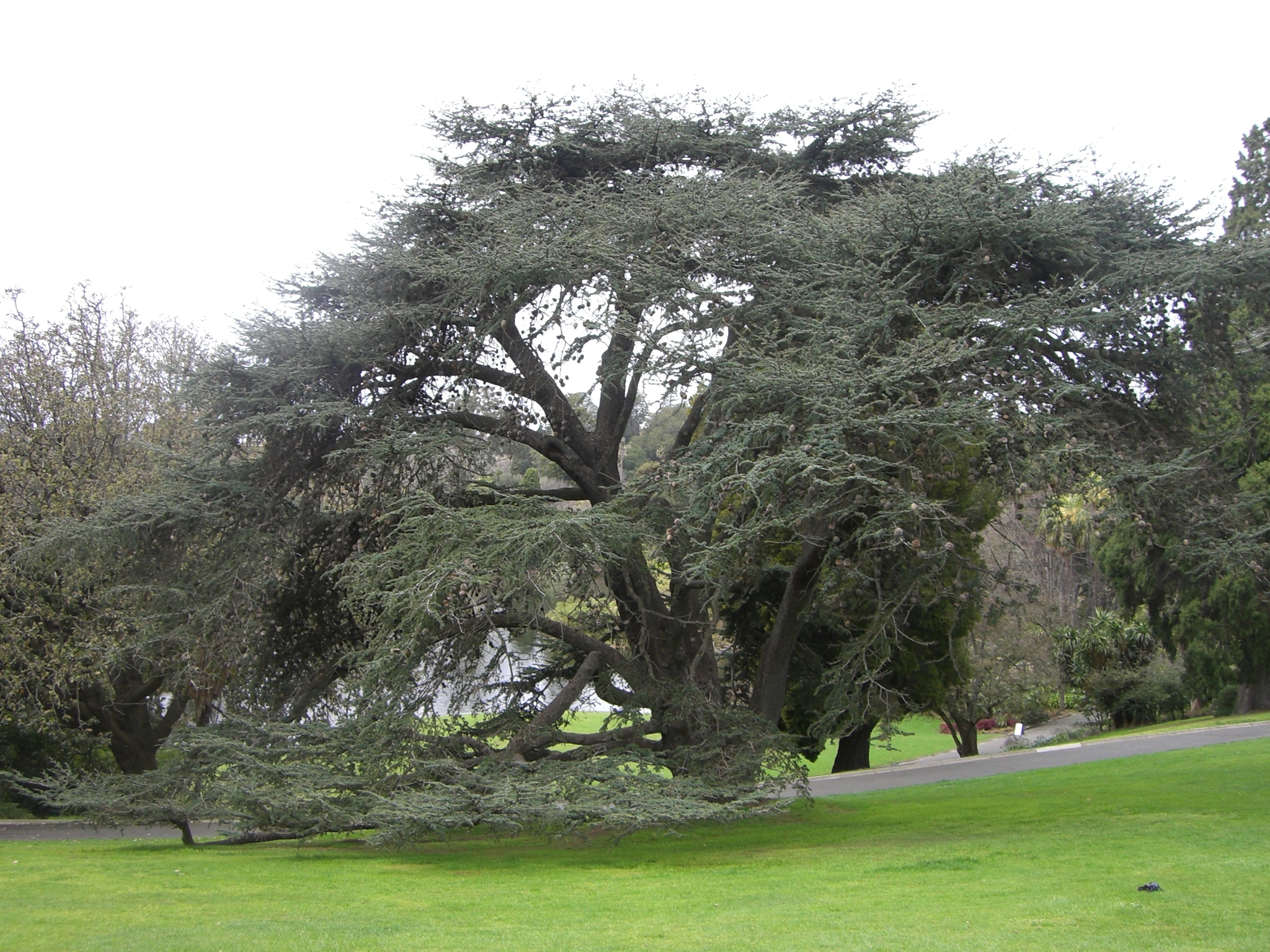
A widespreading tree when mature, growing 20-30 m tall usually forking low into several main trunks. Young shoots mostly brown-hairy at first. Branches generally spreading horizontally in distinctive picturesque flattened tiers of foliage. Leaves 2-3.5 cm long. Male cones 4-5 cm long. Female cones barrel shaped mostly 9-12 cm long but occasionally smaller, 5-7 cm wide.
The spelling of the specific epithet with a single 'i' follows the rules of Latin grammar for the genitive case. The rarely grown Cedrus libani A. Rich. subsp. brevifolia (Hook. f.) Meikle is very similar but differs in having very short leaves less than 1.5 cm long, downy branchlets and cones tapered to the base and narrowed at the tip to a nipple-like point. It is occasionally offered in the trade and often grows naturally at altitude c. 1000-1500 m.
Grows naturally in montane E Mediterranean. Cyprus, Lebanon, Syria, SE Turkey, NW Africa.
Jarvis (1974).
SA: Mylor (Rockford Estate on the Bridgewater to Echunga Rd). NSW: Bathurst (Machattie Park); Mt Wilson ('Yengo'); Sydney (Royal Bot. Gds). ACT: Commonwealth Ave (SE side, identification needs confirmation). VIC: Melbourne (Royal Bot. Gds, fine specimen on the Hopetoun Lawn with the characteristic laterally-tiered branches). TAS: Longford ('Woolmers' c. 100 years old in 1990 c. 25 m tall).VIC: Monbulk (Yamina Rare Plants Nsy, 6-8 m tall in 1991).
Trunk mostly divided low down; foliage layered; twigs hairless; cones more than 9 cm long; cf. C. atlantica. Cedrus libani and C. atlantica are sometimes difficult to distinguish as adult trees because their leaf colours are often similar and their characteristic habits may be assumed by the other species; they are known to intergrade in the wild.
Source: (1995). Pinaceae. In: . Horticultural Flora of South-eastern Australia. Volume 1, Ferns, conifers & their allies. The identification of garden and cultivated plants. University of New South Wales Press.

Cedrus libani 'Comte De Dijon'
Slow-growing, broadly conical cultivar of 'Nana' with wide-spreading branches, the needles tapering to each end, narrow. Raised by nurseryman Barbier, Orléans, France.
Large, irregular bush. Foliage bright yellow in early summer, fading. Seedling discovered by Fred Bergman of Raraflora, Feasterville, Pennsylvania, USA in the 1970s.
('Horizontalis') a variable plant, possibly originating as a side-graft. Found in Hilliers garden, England.
Dwarf, low-growing flattened globose bush. Origin unknown.
Foliage pendulous. An old cultivar originating from the UK.
Dwarf, shrubby, slow-growing, the branches eventually hanging downwards. Arnold Arboretum, USA. subsp. stenocoma O. Schwarz is said to be conical at first, becoming columnar and flat-topped, also intermediate in leaf and cone sizes between typical c. libani and c. atlantica. However, recent research on the floras of Cyprus and Turkey refer to this distinction as unclear and therefore of doubtful value.